$224.99
If you’re looking for a hardy, colorful, and relatively easy-to-care-for tortoise, the cherry head redfoot tortoise for sale may be the perfect fit.
The Cherryhead Redfoot Tortoise
A distinctive and captivating subspecies of the Redfoot Tortoise, is a popular choice among reptile enthusiasts due to its vibrant coloring, manageable size, and relatively easy care requirements. This tortoise, native to the forests of South America, particularly Brazil, stands out for its red, orange, or even pink-colored scales on its head and limbs, giving it the “cherryhead” name. If you’re thinking of adding this tortoise to your collection or home, it’s important to understand its characteristics, care needs, and what to expect in terms of availability and cost.
Origins and Physical Characteristics of the Cherryhead Redfoot Tortoise
The *cherry head redfoot tortoise for sale* is native to the tropical and humid forests of South America, primarily in regions such as Brazil, Paraguay, and parts of Argentina. Being a forest species, they thrive in environments with dense vegetation, plenty of shade, and moderate humidity levels. This makes their care requirements somewhat different from those of tortoises from arid regions.
Visually, the Cherryhead Redfoot is striking. As the name suggests, the defining feature of this tortoise is the vivid red or orange scales on its head and limbs, contrasting with its dark, almost black or brown carapace (shell). These colorings vary slightly between individuals, but they are always vibrant and eye-catching. The carapace itself is domed and typically has subtle yellowish patterns or rings.
In terms of size, Cherryhead Redfoots are relatively small for tortoises, making them easier to house than many larger species. They typically grow to about 10-14 inches in length, with some males reaching up to 15 inches. Their compact size and beautiful appearance make them a popular choice for those looking for a pet tortoise that won’t require an enormous enclosure.
Cherryhead Redfoot Tortoise Temperament and Behavior
The *Cherryhead Redfoot Tortoise* is known for its gentle and curious demeanor, which makes it an excellent companion for both new and experienced tortoise keepers. These tortoises are generally docile and don’t exhibit aggressive behaviors, making them safe to handle, especially when raised in a calm and consistent environment.
While not particularly social animals, they do exhibit a level of curiosity, often exploring their environment and occasionally interacting with other tortoises or even their human caretakers. Cherryheads can recognize their owners and may approach when food or treats are offered. However, as with any tortoise, handling should be done with care and not too frequently, as they can become stressed with excessive handling.
One of the more fascinating behaviors of the *Redfoot Tortoise* (including the Cherryhead subspecies) is its semi-social nature. In the wild, they are occasionally seen in small groups, particularly when they gather around food sources. However, if you are considering keeping more than one tortoise, make sure their enclosure is large enough to avoid territorial disputes, especially between males.
Housing and Enclosure Requirements for the Cherryhead Redfoot Tortoise
Creating the proper habitat is crucial for the health and well-being of your Cherryhead Redfoot Tortoise. Since these tortoises are native to tropical regions, they require an environment that mimics their natural habitat as closely as possible.
Indoor Enclosures
For those living in cooler climates or who prefer to keep their tortoise indoors, setting up a proper indoor enclosure is important. A Cherryhead Redfoot tortoise requires a spacious enclosure, even though they are relatively small. The minimum size for one tortoise should be 4 feet long by 2 feet wide, but the bigger, the better. Larger enclosures allow the tortoise to exercise, explore, and stay mentally stimulated.
You will need to create a temperature gradient within the enclosure to provide your tortoise with both warm basking areas and cooler resting spots. The basking area should reach temperatures of 90°F, while the cooler side of the enclosure can drop to around 75°F. A UVB light is also essential for your tortoise’s health, as it helps them metabolize calcium and maintain healthy bone growth.
Humidity is another critical factor for Cherryhead Redfoots. Since they come from humid forests, they need an environment with a humidity level of around 70-80%. You can maintain humidity by using a substrate like coconut coir or sphagnum moss, which holds moisture well, and by misting the enclosure regularly.
Outdoor Enclosures
If you live in a warm, humid climate, keeping your *Cherryhead Redfoot Tortoise* in an outdoor enclosure is an excellent option. Outdoor enclosures allow your tortoise to experience natural sunlight and fresh air, which are essential for their physical and mental well-being.
The outdoor enclosure should be secure, with walls high enough that your tortoise cannot climb out. Cherryheads are relatively strong for their size, so ensure the walls are buried several inches into the ground to prevent burrowing escapes. A shaded area is necessary to protect them from the heat, and access to fresh water for soaking and drinking is also essential.
## Diet and Nutrition for the Cherryhead Redfoot Tortoise
A well-balanced diet is key to ensuring the health and longevity of your *Cherryhead Redfoot Tortoise*. In the wild, these tortoises are omnivores, feeding on a mix of vegetation, fruits, and occasionally insects or carrion. In captivity, their diet should mimic this as much as possible.
The majority of their diet (around 70%) should consist of dark leafy greens and vegetables. Some excellent choices include:
– Collard greens
– Mustard greens
– Dandelion greens
– Endive
– Squash
– Zucchini
About 20% of their diet can consist of fruits, but since fruits are high in sugar, they should be offered in moderation. Some suitable fruits include:
– Papaya
– Mango
– Berries
– Cantaloupe
The remaining 10% of their diet can include protein sources, such as mushrooms or occasionally small amounts of cooked eggs or low-fat dog food. However, protein should be offered sparingly to prevent health issues like pyramiding of the shell.
It’s also essential to provide your tortoise with a calcium supplement to promote strong shell and bone growth. Dust their food with calcium powder a few times a week and ensure they have access to a cuttlebone or other calcium source in their enclosure.
Lifespan and Health Considerations
The *Cherryhead Redfoot Tortoise* is a long-lived species, with individuals often reaching 40 to 50 years of age in captivity, and sometimes even longer. When properly cared for, these tortoises can live full and healthy lives, but there are a few health issues that owners should be aware of.
Common Health Issues
1. *Respiratory Infections*: Given their need for high humidity, if their enclosure is too dry or drafty, Cherryhead Redfoots can develop respiratory infections. Signs of infection include wheezing, nasal discharge, and lethargy. Maintaining proper humidity levels and ensuring their enclosure is free from drafts will help prevent this.
2. *Metabolic Bone Disease (MBD)*: This is a common issue in reptiles, including tortoises, that do not receive enough calcium or UVB light. MBD leads to weak bones and shell deformities. Prevent MBD by providing a well-balanced diet and ensuring your tortoise has access to UVB light or natural sunlight.
3. *Pyramiding*: This condition affects the shell, causing the scutes to grow unevenly, leading to a bumpy or pyramided appearance. Pyramiding is usually caused by an improper diet (too much protein) or low humidity levels. To avoid this, ensure your tortoise’s diet is high in calcium and low in protein, and maintain appropriate humidity levels in their enclosure.
Cherryhead Redfoot Tortoise for Sale: What to Expect
When searching for a *Cherryhead Redfoot Tortoise for sale*, there are several factors to consider, including where you buy your tortoise, the price, and the tortoise’s health and age.
Purchasing from Reputable Breeders
It’s essential to buy your Cherryhead Redfoot Tortoise from a reputable breeder or exotic pet dealer. A good breeder will provide detailed information about the tortoise’s health, diet, and origin. Avoid purchasing from pet stores where the animals may not have received proper care or from dealers who cannot provide information about the tortoise’s background.
When purchasing a *Cherryhead Redfoot Tortoise*, ensure that it is active, alert, and free from visible health issues, such as a runny nose or swollen eyes. A healthy tortoise will have clear eyes, a smooth shell (without signs of pyramiding), and a firm, dry nose.
### Redfoot Tortoise Price
The *Redfoot Tortoise price, including the Cherryhead variety, can vary depending on factors such as age, size, and breeder reputation. On average, a juvenile **Cherryhead Redfoot Tortoise* may cost between $150 and $350. Adult tortoises can cost more, especially if they have particularly vibrant coloration or are proven breeders.
When looking for a *Redfoot Tortoise for sale*, be wary of prices that seem too low, as this could indicate poor breeding practices or health issues.
Conclusion
The *Cherryhead Redfoot Tortoise* is a visually striking and manageable tortoise species, making it an excellent choice for reptile enthusiasts of all experience levels. With their vibrant red and orange markings, gentle disposition, and relatively simple care requirements, they make wonderful pets.
If you’re searching for a *Cherryhead Redfoot Tortoise for sale*, it’s important to find a reputable breeder who can provide a healthy tortoise and the information you need to give it the best care possible. Keep in mind the essential requirements such as proper housing, temperature, humidity, and diet to ensure your Cherryhead Redfoot thrives for decades. With the right care, these tortoises can become long-term companions, providing years of enjoyment and fascination with their unique personalities and beautiful appearance.
Where to Find Cherryhead Redfoot Tortoises for Sale
When searching for *Cherryhead Redfoot Tortoises for sale*, consider both online and local breeders. Many reptile expos or specialized reptile shops also offer these tortoises, providing an opportunity to inspect the animals in person before making a purchase. Always prioritize sellers who have a good reputation for breeding healthy tortoises, as their proper upbringing in the early stages of life can significantly affect their longevity and health.
Additionally, some breeders may specialize in certain morphs or color variations of *Redfoot Tortoises*, including the Cherryhead subspecies. Look for breeders who can provide health certificates, information on the tortoise’s diet and care routines, and photos of both the parents and the tortoise you are considering purchasing.
Adoption and Rescue Options
It’s worth noting that in some cases, *Cherryhead Redfoot Tortoises* can be found through tortoise rescues or adoption programs. Many times, these tortoises are surrendered due to improper care or owners being unable to meet their needs. Adopting a tortoise can be a rewarding option, but be prepared for the responsibility of potentially rehabilitating a tortoise with health issues or behavioral problems. However, adoption often comes with lower upfront costs compared to purchasing from a breeder.
Final Thoughts on the Cherryhead Redfoot Tortoise
If you’re looking for a hardy, colorful, and relatively easy-to-care-for tortoise, the *Cherryhead Redfoot Tortoise* may be the perfect fit. These tortoises make wonderful pets for those willing to commit to the long-term care they require, and their charming personalities and striking appearance ensure they’ll be a fascinating addition to your home.
Whether you’re looking for a *Redfoot Tortoise for sale* or considering adopting one, it’s essential to do your research, prepare a suitable environment, and provide a balanced diet to ensure your tortoise lives a healthy, happy life. With the right care, your Cherryhead Redfoot Tortoise can thrive for many years, becoming an integral part of your reptile family.
Be the first to review “cherry head redfoot tortoise for sale 1 best exotic pet” Cancel reply
Related products
Parrots For Sale
Parrots For Sale
Parrots For Sale
Parrots For Sale
Parrots For Sale
Parrots For Sale
Parrots For Sale
Lafeber Classic Nutri-Berries Parrot Food – Exotic Pets for Sale



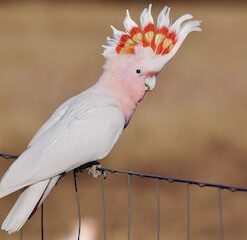

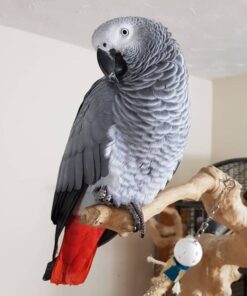
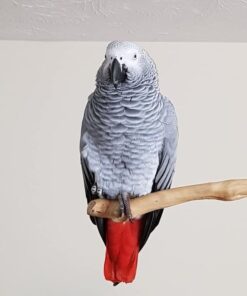
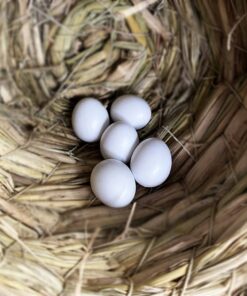
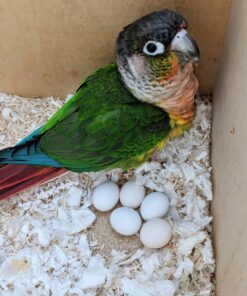
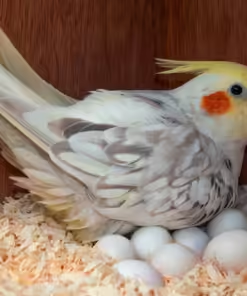


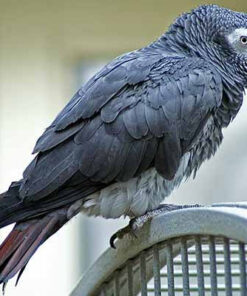
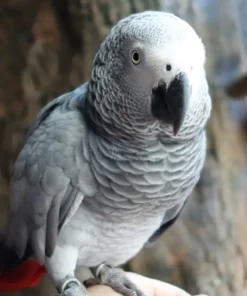

Reviews
There are no reviews yet.